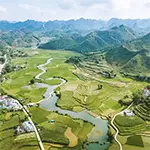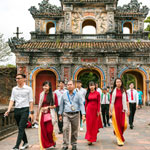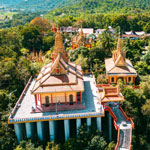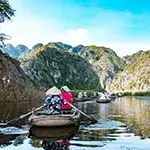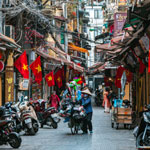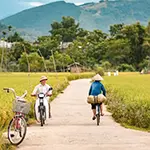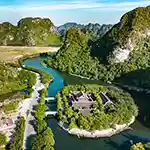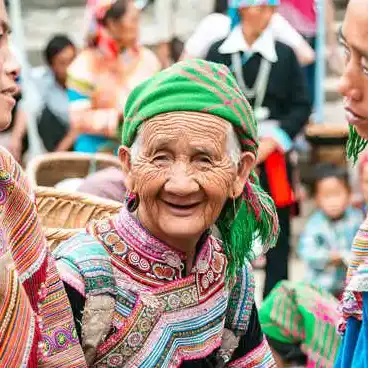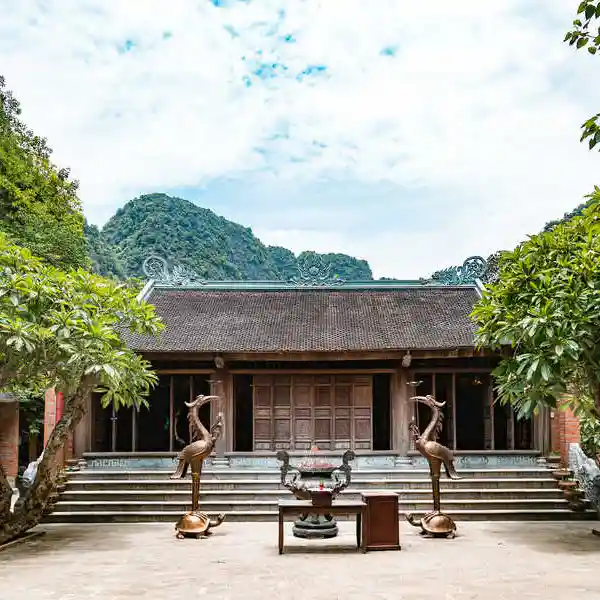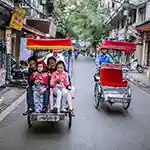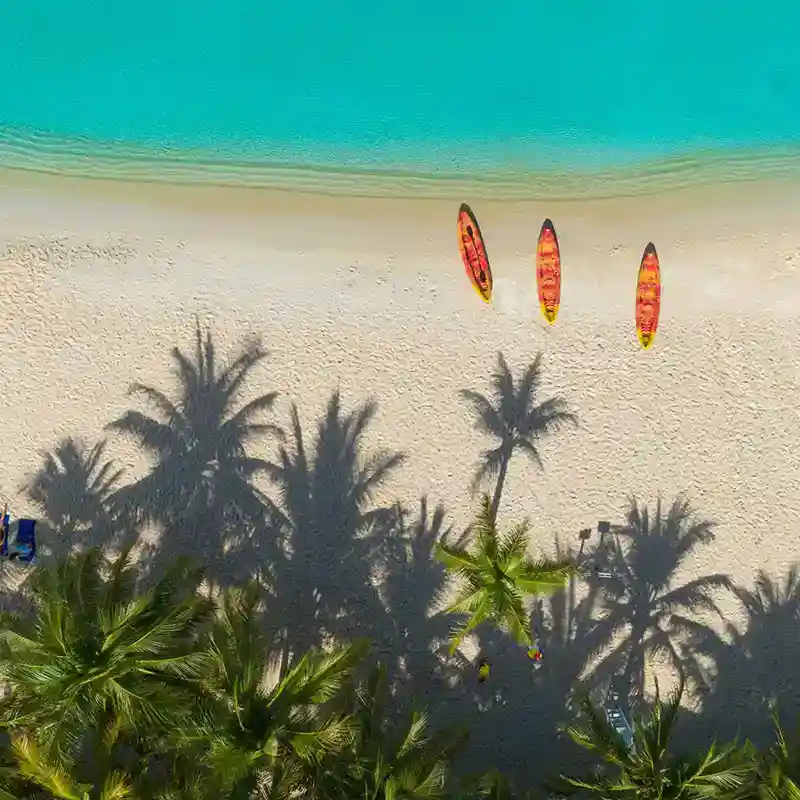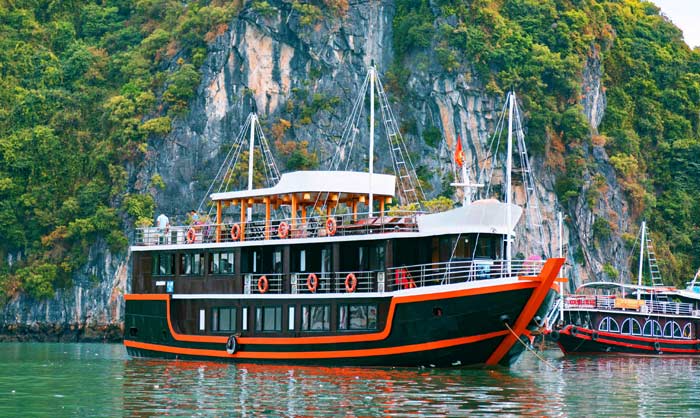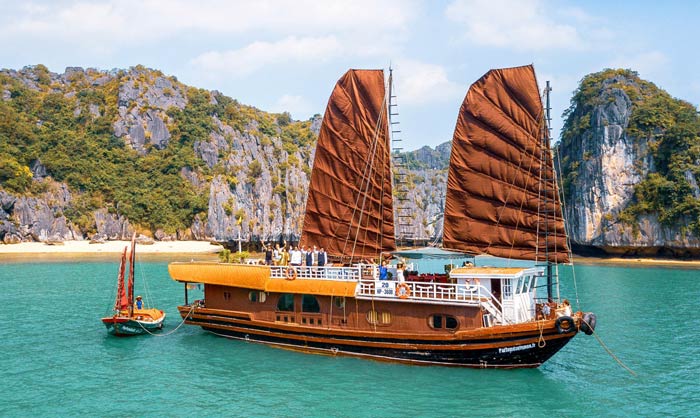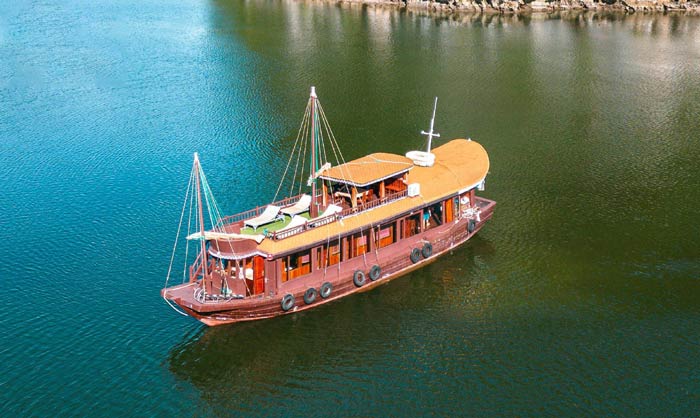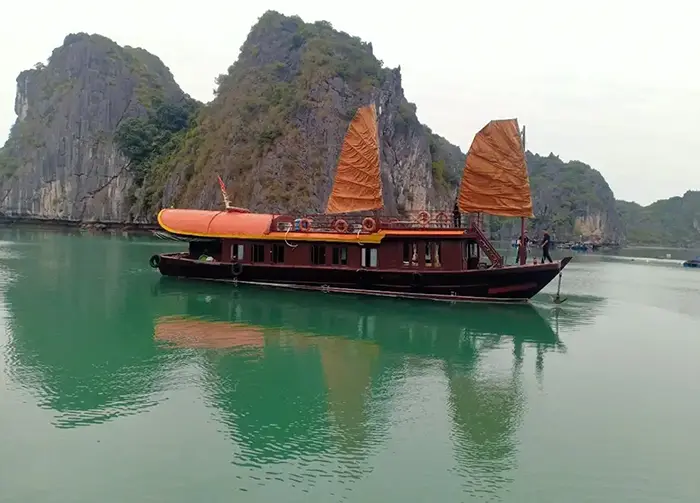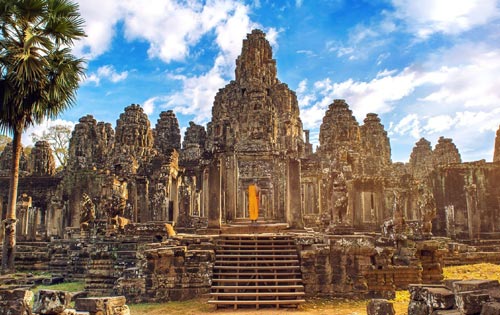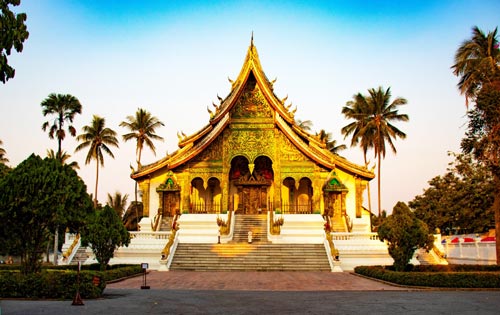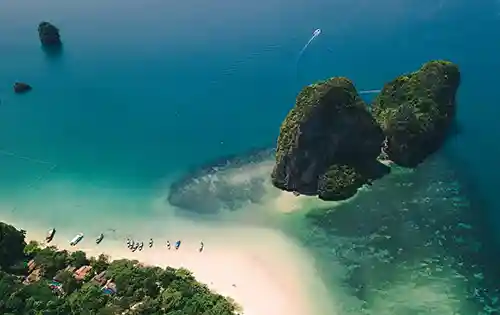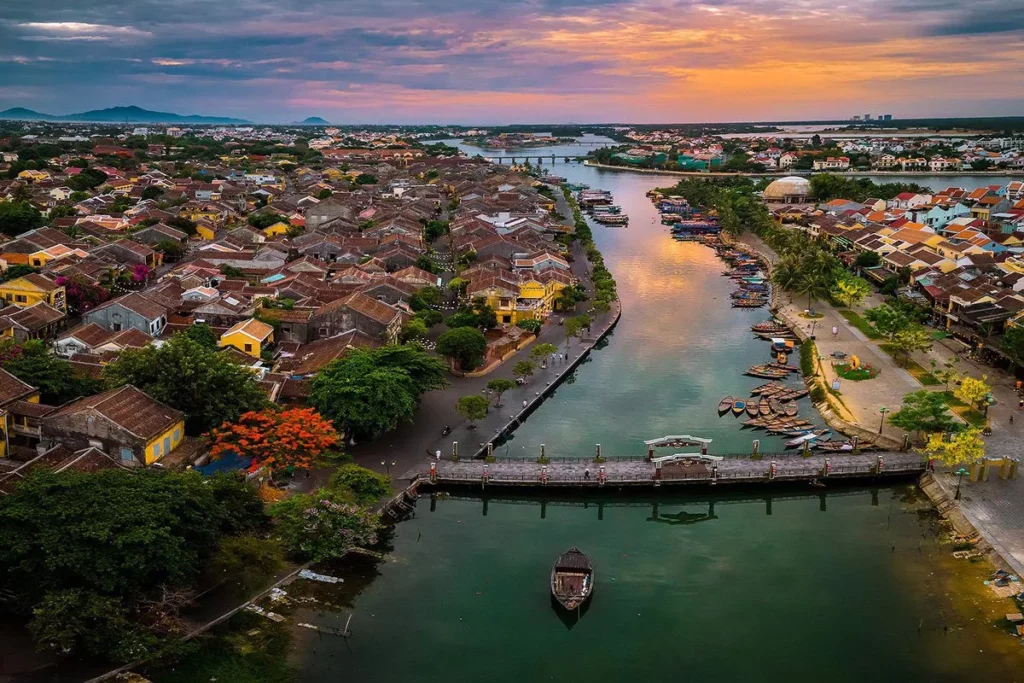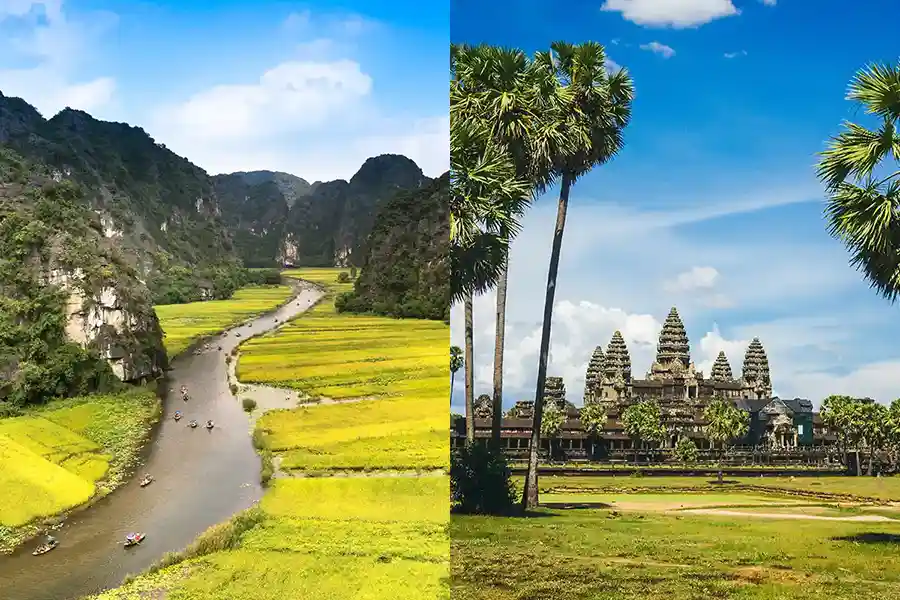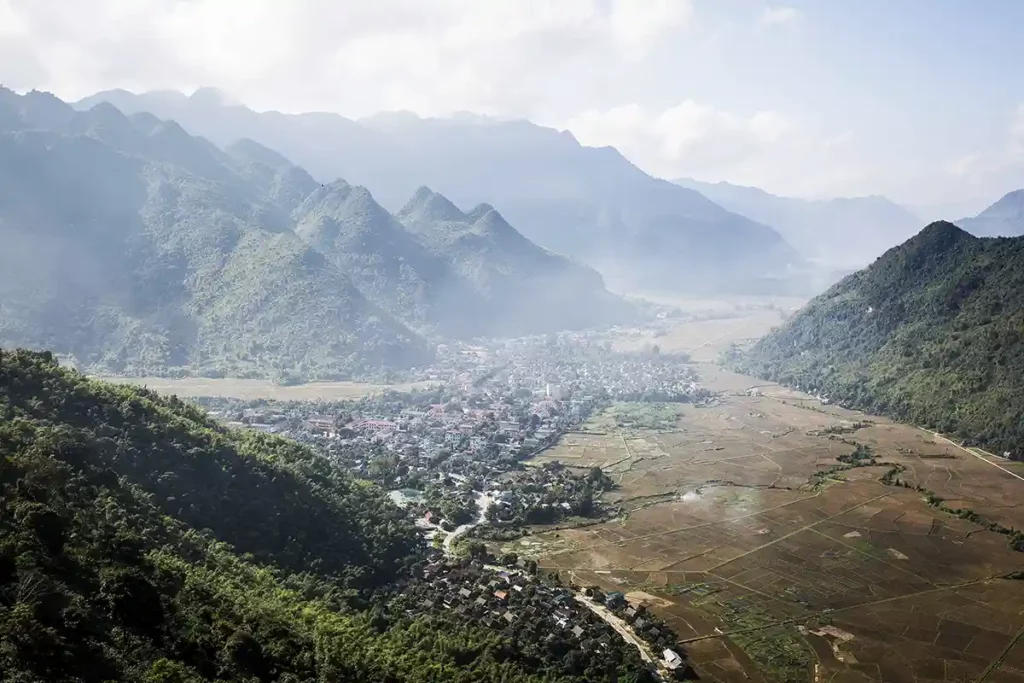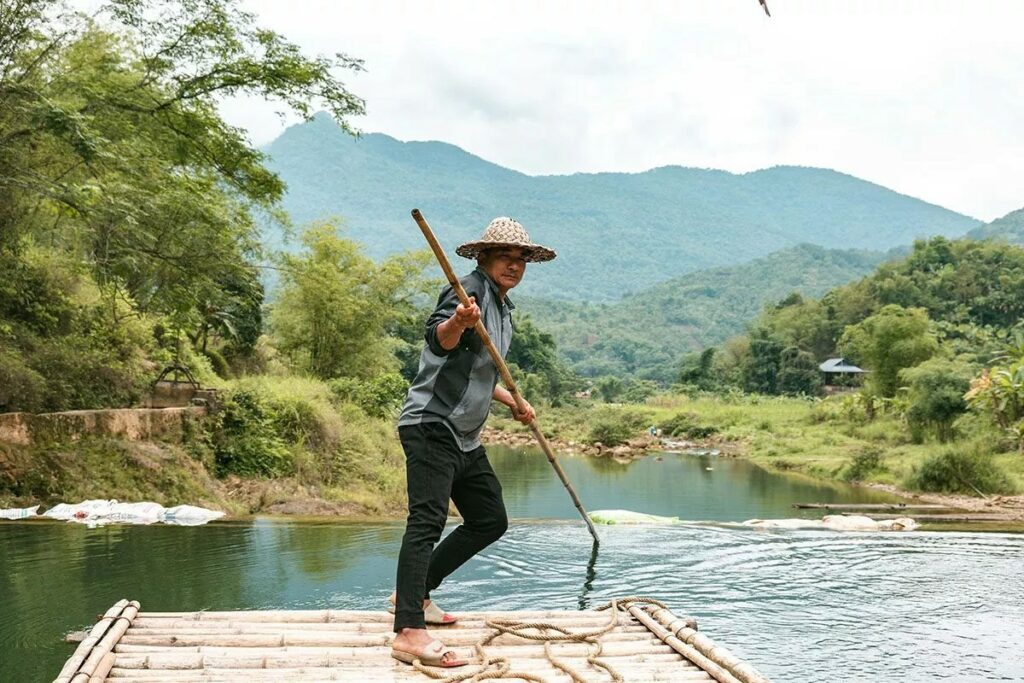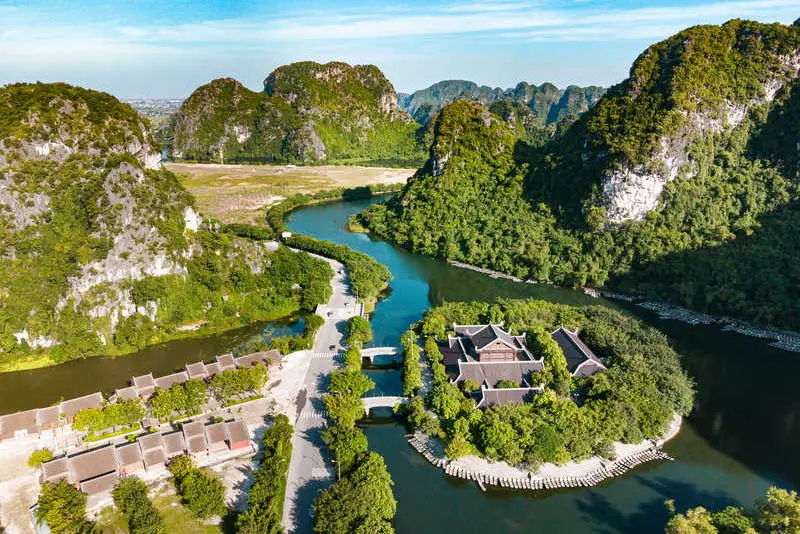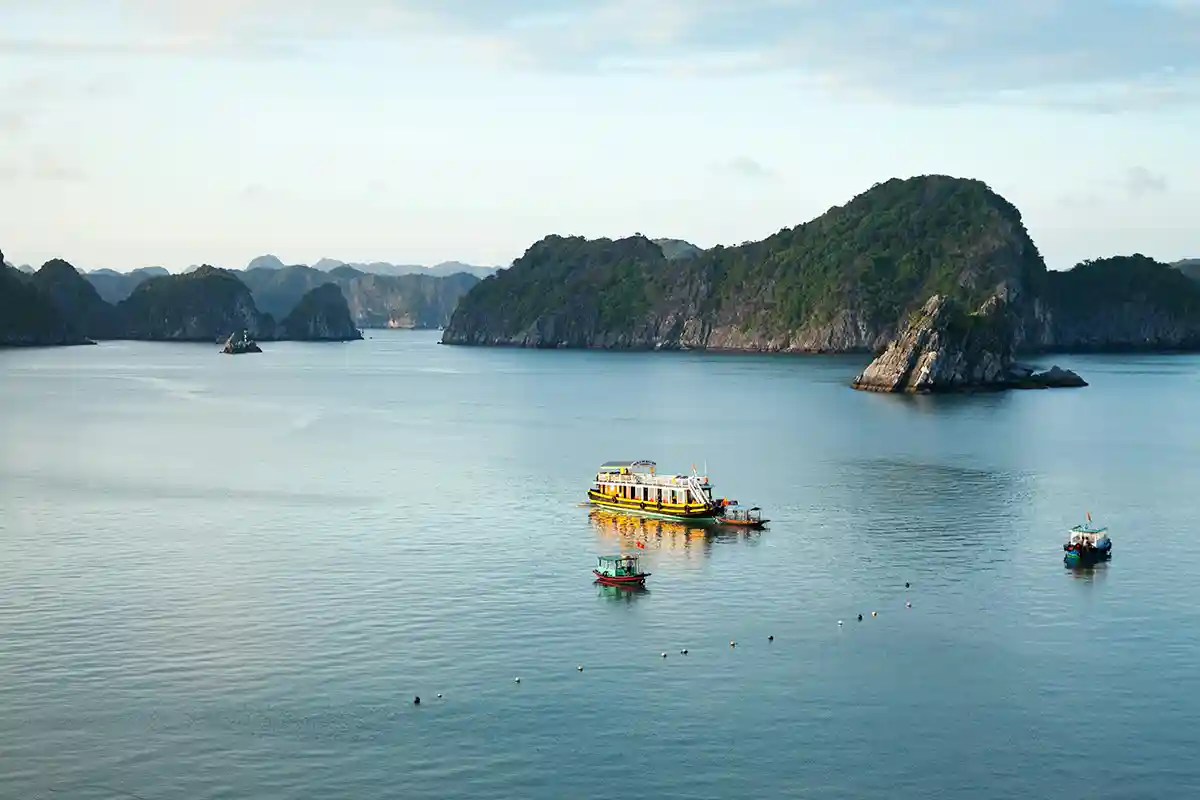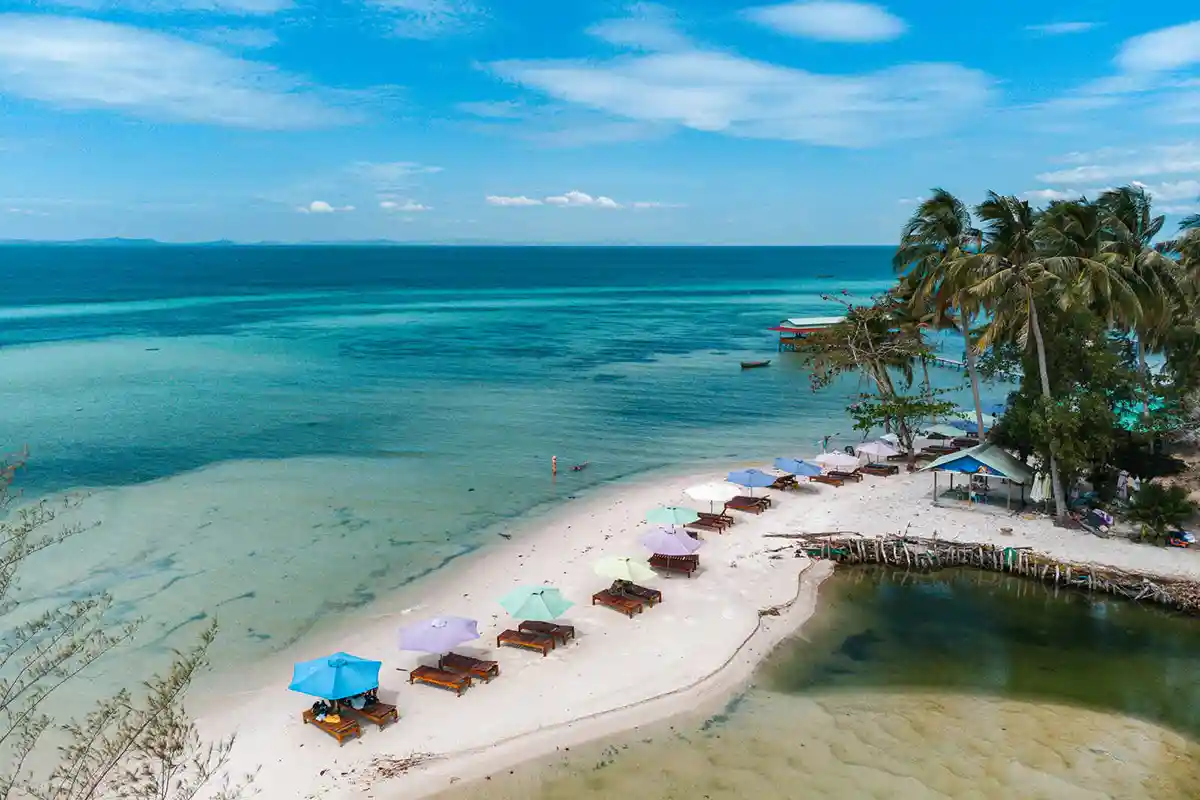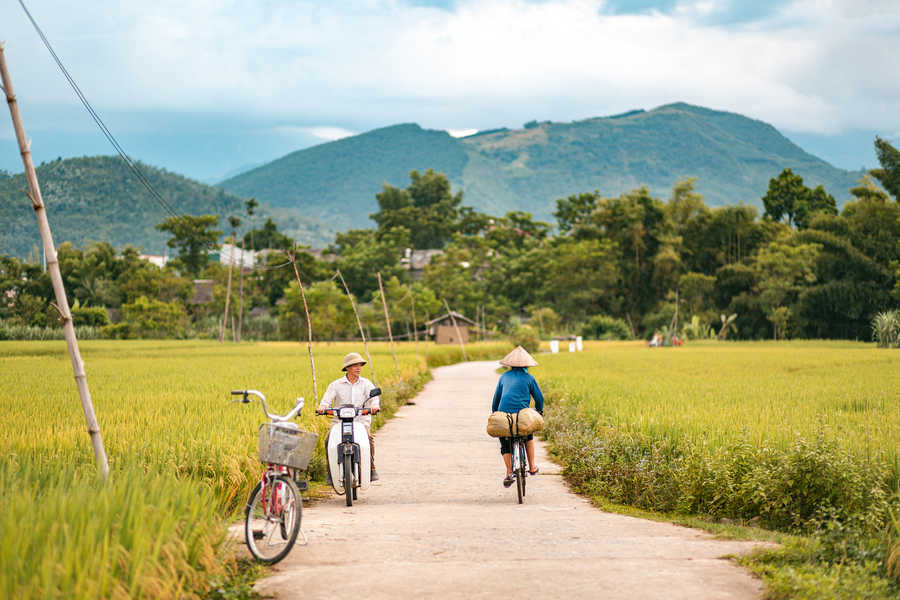Central Vietnam is a true treasure trove of history, culture, and natural wonders. Often overshadowed by the northern and southern regions, this area offers travelers an equally fascinating range of experiences. From ancient cities to pristine beaches, the attractions to explore are countless.
If you’re wondering what to see in Central Vietnam, this guide outlines the 10 best destinations to visit, each brimming with history and stunning landscapes.
What are the provinces of Central Vietnam?
Central Vietnam, known as “Mien Trung” in Vietnamese, is geographically located between Northern and Southern Vietnam. This region stretches from the central highlands to the East Sea with two island districts of Truong Sa and Hoang Sa, encompassing a diverse landscape of mountains, plains, and coastlines. The limits of Central Vietnam are often defined by Thanh Hoa province in the north and Binh Thuan province in the south.
The region includes the following provinces (From North to South): Thanh Hoa, Nghe An, Ha Tinh, Quang Binh, Quang Tri, Thua Thien – Hue, Da Nang (Hoang Sa), Quang Nam, Quang Ngai, Kon Tum, Gia Lai, Binh Dinh, Phu Yen, Dak Lak, Khanh Hoa (Truong Sa), Lam Dong, Ninh Thuan and Binh Thuan (Sometimes Ninh Thuan and Binh Thuan can be added to the South Vietnam).
Map of cities in Central Vietnam. Source: VNPTGroup
This region holds strategic significance in the development of Vietnam’s tourism, offering an unparalleled blend of historical monuments, cultural richness, and scenic beauty. Hue represents its imperial heritage, while Hoi An showcases centuries of international trade. Additionally, natural attractions like the Phong Nha caves and Cham Islands further highlight its tourism potential.
The 10 must-things-to-see in Central Vietnam
Phong Nha Ke Bang national park (Quang Binh province)
Quang Binh is the gateway to some of Vietnam’s most spectacular natural wonders, making it a highlight for anyone exploring the things to see in Central Vietnam.
The Phong Nha-Ke Bang National Park, a UNESCO World Heritage Site, is famed for its extensive cave systems. The name “Phong Nha” in Vietnamese translates to “wind through the teeth,” evoking the stalactites at the cave’s entrance.
The National Park also includes the colossal Son Doong Cave, the largest known cave in the world, which is part of a network connecting over 150 other caves near the Vietnam-Laos border. This otherworldly wonder features underground rivers, lush forests, and colossal caverns that offer an unparalleled adventure for explorers.
Son Doong Cave was once the filming location of the Hollywood movie Kong: Skull Island.
Nearby, the stunning Paradise Cave reveals breathtaking stalactites and stalagmites, making it one of the park’s crown jewels. Outside the caves, lush landscapes provide ample opportunities for trekking and discovering the region’s unspoiled beauty. Quang Binh’s tranquil riverways, including the Son River, add to the area’s serene charm and make it a nature lover’s paradise.
Hue (Thừa Thiên Huế province)
Once the capital of Vietnam during the Nguyen dynasty, Hue is synonymous with imperial grandeur. The city is a heaven for history enthusiasts, offering a glimpse into Vietnam’s last feudal past during 143 years.
The Imperial City (Citadel) in Hue is a UNESCO World Heritage Site, offering an expansive complex featuring many palaces, temples, and ceremonial gates that narrate the rich history of Nguyen dynasty, the last dynasty of Vietnam, known as a period of turmoil due to conflicts between the country and Western powers from the early 19th century to the mid-20th century.
A corner of Forbidden Citadel.
Another must-see is Thien Mu Pagoda, an iconic seven-story pagoda situated along the Perfume River that stands as an architectural marvel. Additionally, the Tomb of Khai Dinh showcases a unique blend of traditional Vietnamese and Western designs, making it one of the most elaborate royal tombs in Hue. Nearby, Phuoc Tich Village is renowned for its well-preserved traditional architecture and centuries-old pottery tradition, which reflects the artistry and cultural heritage of the region.
Khai Dinh Tomb – A unique intersection of Eastern and Western architecture.
Da Nang (province-city of Da Nang)
Da Nang, a dynamic and captivating coastal city, is much more than just a gateway to Central Vietnam.
Blending modernity and cultural heritage, it enchants visitors with remarkable sites such as the Cham Sculpture Museum, home to the world’s largest collection of Cham artifacts, offering a fascinating glimpse into this ancient civilization through finely carved sandstone sculptures.
The Marble Mountains, with their mystical caves and pagodas, invite spiritual exploration, while the iconic Dragon Bridge lights up the weekend sky with its fire and water shows. Meanwhile, the Son Tra Peninsula, featuring the Lady Buddha statue and rich biodiversity, provides an exceptional natural retreat. Serving as a gateway to nearby treasures like Hoi An and the My Son Sanctuary, Da Nang is a must-visit destination where heritage, modernity, and breathtaking landscapes blend seamlessly for a truly unique and memorable experience.
Discover Cham culture at the Museum of Cham Sculpture.
Not far away, Cu Lao Cham (Cham Islands) is an idyllic escape, consisting of eight small islands known for their rich marine biodiversity. This UNESCO Biosphere Reserve is perfect for snorkeling, diving, and relaxing by pristine beaches.
Cu Lao Cham seen from above.
Da Nang also boasts some of Vietnam’s most stunning beaches, adding to the numerous things to see in Central Vietnam. My Khe Beach, often hailed as one of the most beautiful beaches in Asia, offers golden sands and turquoise waters, ideal for sunbathing, swimming, or enjoying seaside activities. For a touch of luxury, the resorts along Non Nuoc Beach provide unparalleled views and relaxation.
Hoi An (Quang Nam province)
Quang Nam province is home to Hoi An, a quaint riverside town that stands out as one of Vietnam’s most charming destinations.
The Hoi An Ancient Town is a UNESCO World Heritage Site that harmonizes Chinese, Japanese, Vietnamese, and French architectural styles, creating a fascinating showcase of cultural convergence. Cobblestone streets and well-preserved historic homes, illuminated by traditional lanterns at night, add to its timeless charm.
Hoi An’s architecture always leaves a strong impression on tourists.
Another must-see destination in Hoi An is the Japanese Covered Bridge, featured on Vietnam’s 20,000 VND banknote, stands as a significant emblem of Hoi An’s golden age as a central trading hub in Asia. Built through the contributions of Japanese merchants, the bridge symbolizes a talisman designed to calm the mythical sea monster Namazu, fostering peace and prosperity in the trade relationship between Vietnam and Japan.
Japanese Covered Bridge – an iconic symbol of Hoi An.
A short trip from the town, An Bang Beach offers a peaceful retreat with its pristine waters and laid-back atmosphere, making it ideal for relaxation. Nearby, travelers can delve into traditional Vietnamese crafts, such as lantern-making workshops and cooking classes, which add a deeper cultural dimension to their visit. Hoi An’s distinct combination of ancient architecture, multicultural history, and artisan traditions make it a standout destination.
Quy Nhon (Binh Dinh province)
Quy Nhon, nestled along Binh Dinh province’s coastline, is an up-and-coming destination celebrated for its serene beauty and historical significance.
The province preserves ancient Cham Towers, which serve as monuments to the once-thriving Cham civilization, offering a glimpse into the area’s fascinating heritage.
Ky Co Beach offers a pristine slice of paradise, with crystal-clear waters perfect for swimming and relaxing. At Eo Gio, dramatic cliffs shaped by the sea provide awe-inspiring ocean vistas, ideal for photographers and nature lovers. A closer option is Cu Lao Xanh, a 30-minute canoe ride from Quy Nhon. This untouched island offers pristine beauty and the opportunity to snorkel and explore vibrant coral reefs.
However, the sun in Quy Nhon can especially strong, particularly during midday, making sunscreen a must-have. Protect yourself further with wide-brimmed hats, sunglasses, and lightweight long-sleeved clothing to avoid sunburn and heat exhaustion.
From fresh seafood markets to tranquil bays, Quy Nhon invites travelers seeking an authentic coastal getaway.
Ky Co Island from above.
Phu Yen
Phu Yen’s untouched beauty makes it a captivating destination for travelers seeking serene, off-the-beaten-path experiences.
The fascinating Da Dia Reef, with its unique hexagonal basalt columns, is a natural phenomenon that draws geology enthusiasts and photographers alike. Visitors will also enjoy Bai Xep Beach, a quiet, picturesque shoreline perfect for relaxing and unwinding. Its golden sands and clear blue waters make it ideal for a tranquil escape.
Da Dia Reef is one of the best things to see in Central Vietnam.
For an active adventure, Vung Ro Bay offers kayaking and local fishing tours, giving insight into Phu Yen’s traditional livelihoods. Phu Yen’s unspoiled landscapes and understated charm leave visitors with memories of pure tranquility.
Da Lat (Lam Dong province)
Known as the “City of Eternal Spring,” Da Lat’s temperate climate and scenic beauty have long attracted travelers seeking a romantic and refreshing escape.
The Palace of Bao Dai, once the residence of Vietnam’s last emperor, provides a fascinating glimpse into royal life while showcasing unique architectural charm. Constructed in the 1930s as a retreat for the emperor, the Palace reflects the period’s French colonial style, featuring a blend of Western and Vietnamese architectural elements. It includes a lush garden, large rooms furnished with mid-century European décor, and personal items belonging to Bao Dai. The structure provides a glimpse into the imperial lifestyle during a time of political flux in Vietnam.
Bao Dai Palace I seen from outside
Additionally, Da Lat is famous for its vibrant Flower Gardens, which display an array of stunning blooms that underscore the city’s title as Vietnam’s floral capital.
Da Lat has many poetic flower gardens.
Whether exploring coffee plantations, wandering through pine forests, or visiting nearby waterfalls, Da Lat provides a serene and unique atmosphere distinct from the rest of Central Vietnam. Its European-style villas, mist-covered hills, and tranquil lakes make it an unforgettable destination.
Nha Trang (Khanh Hoa province)
Khanh Hoa, with its capital Nha Trang, is synonymous with stunning coastline and vibrant cultural history.
The Po Nagar Cham Towers, an enduring remnant of the Cham Kingdom, stand atop a hill overlooking the river, offering an inspiring blend of cultural significance and breathtaking views of Hinduism’s effect on Vietnam. These ancient structures are a testament to Cham artistry and spirituality.
Po Nagar Cham Temple.
For beach lovers, Nha Trang offers some of the most beautiful beaches in Vietnam, each with its unique charm. Bai Dai Beach features golden sands and clear waters perfect for swimming or a tranquil walk. Hon Chong Beach, known for its dramatic rocky formations and scenic views, is a favorite for nature lovers. Meanwhile, Doc Let Beach boasts a quiet, pristine shoreline ideal for those seeking serenity away from the city bustle. You can also explore Mun Island, where extraordinary coral reefs create a haven for marine life, offering some of the best snorkeling and diving experiences in Vietnam. Beyond the underwater beauty, Khanh Hoa’s fishing villages offer visitors the chance to immerse themselves in the region’s traditional way of life. With its unspoiled beaches, dramatic coastal cliffs, and charming rural landscapes, Khanh Hoa offers a perfect mix of culture and scenic allure.
Ninh Thuan (Ninh Thuan province)
Ninh Thuan’s landscapes encompass everything from sun-soaked beaches to arid dunes, offering diverse experiences for curious travelers.
Ninh Chu Beach captivates visitors with its unspoiled beauty and calm waters, making it ideal for water-based activities and quiet retreats. The Po Klong Garai Cham Towers, perched on a hill, stand as a proud reminder of Cham cultural heritage. These intricately designed towers are an enduring symbol of ancient craftsmanship and spiritual devotion. Additionally, Vinh Hy Bay, renowned for its emerald waters and rugged limestone karsts, offers an idyllic escape perfect for boat tours and snorkeling. Nearby, Rai Cave presents a surreal landscape of rocky formations that meet the sea, making it a favorite for photographers and nature enthusiasts alike.
Po Klong Garai Cham Towers.
Additionally, Ninh Thuan is famous for its vineyards, providing the perfect opportunity to sample locally produced wines and enjoy stunning valley views. A harmonious blend of natural and cultural attractions ensures Ninh Thuan leaves a lasting impression on its visitors.
Mui Ne (Binh Thuan province)
Best known for Mui Ne, Binh Thuan offers a mix of natural beauty and cultural charm. The Red Sand Dunes showcase a desert-like expanse where visitors can try different activities. These sand dunes are known for their distinctive reddish-orange hue, created by the sun’s reflection on the iron-rich sands, particularly at dawn and sunset when the colors are at their most vibrant.
The Red Sand Dunes creates a desert vibe.
Besides, if you are looking for hidden gems and don’t mind the difficulty of traveling, Phu Quy Island is an attractive destination for its picturesque coastline, with golden sandy beaches, rocky formations, and crystal-clear waters perfect for swimming, snorkeling, and diving. Ke Ga Cape offers a more rugged landscape, featuring rocky shores alongside the glistening ocean with the oldest lighthouse in Vietnam built by the French in the 1900s. The lighthouse was made entirely of granite transported from France, promising to be an excellent spot for photography. Lastly, the Phan Thiet Fishing Village offers an authentic view of local coastal life. The best time of year to visit the fishing village is from June to August. At this time, thanks to the calm sea and clear blue sky, you will have the opportunity to witness all the fishing activities of the fishing village people.
Saltwater pools for fish farming.
Experiences for traveling in Central Vietnam
While great things are promised as you explore the must-things-to-see in Central Vietnam, some inconveniences do exist. The intense sun can make exploring uncomfortable, making sun protection essential for any traveler. Visiting some of the more remote attractions, such as islands and secluded beaches, often requires using canoes or boats, adding an adventurous yet logistical layer to planning. In some lesser-developed areas, limited tourism services can occasionally present difficulties. Also, be aware: Some coastal areas may experience rip currents. Always check the weather carefully to ensure your beach experience is safe.
Nevertheless, these challenges are minor compared to the rewards: stunning natural landscapes, fascinating cultural experiences, and hidden gems that make every journey unforgettable. One of the most remarkable aspects of this region is the genuine hospitality of its people. Cases of tourists being overcharged are nearly nonexistent, creating a warm and authentic atmosphere for visitors. The region’s natural beauty and historical landmarks provide a peaceful and enriching travel experience, especially for those seeking to escape the crowds found in other parts of the country.
Central Vietnam is bursting with opportunities to discover historical landmarks, breathtaking nature, and authentic local culture.
For more informations and news about tourism in Vietnam, you can visit this site of Viet Nam National Authority of Tourism.
Don’t miss the chance to explore this dynamic region.
For more information or to organize your stay, feel free to contact us!

